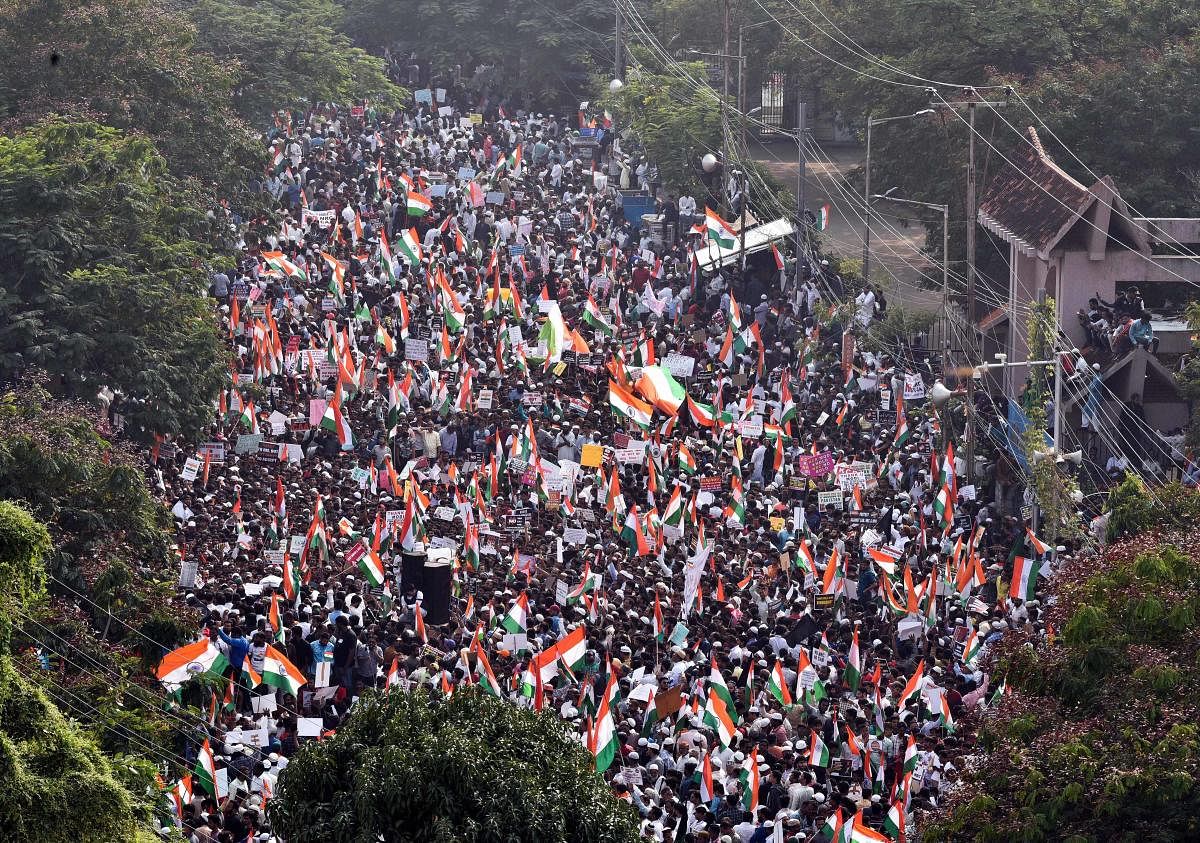
Any national uprising usually hinges on a tall personality whose writ runs among the masses, but the country-wide protests against the Citizenship Amendment Act (CAA), 2019, has baulked this trend by emerging as a leaderless movement.
The freedom struggle revolved around Mahatma Gandhi, a people’s movement against Indira Gandhi was fronted by Jayaprakash Narayan in the seventies, Anna Hazare led the anti-corruption campaign prior to the 2014 Lok Sabha elections. But look for a single leader who holds sway over the CAA protesters nationally, and you will find none. India is fast embracing what are internationally known as ‘autonomous movements.’
American historian and social theorist George Katsiaficas has, in one of his studies, concluded that the primary inspiration behind autonomous movements is the desire to break free from political structures and behaviour patterns imposed from the outside. This enables people to directly decide on matters affecting their everyday lives, as opposed to centralised decisions and hierarchical authority.
One of the earliest such movements was in 1966, when the Italian student community took direct action after a student was murdered at Rome University. The students resorted to violence and at the same time adopted civil disobedience by refusing to pay utility bills.
Worldwide, it is often the absence of trusted and reliable leadership that inspires autonomous movements. While those in favour of CAA have a rallying point around Prime Minister Narendra Modi and Home Minister Amit Shah, those opposed to the Act do not have a single credible mass leader who inspires confidence across the country to lead them. While political parties have held sporadic protests, the only leader who has launched a no-holds-barred campaign is West Bengal Chief Minister Mamata Banerjee, but her area of influence is largely confined to her state.
Often, such mass movements are also the result of pent-up feelings that sometimes may not even be directly connected to the protest in question. In this case, too, for a section of the students and youth, the CAA came as a tipping point after they had been increasingly frustrated over other issues -- the economic slowdown, job losses, police highhandedness and attempts to stifle their voice by painting them as anti-national. For many in the minority community, which was feeling marginalised, this was an opportunity to make their voices heard.
Like in other parts of the world, including Egypt and Hong Kong, which also witnessed leaderless protests, the social media and networking apps have played a key role in awakening the collective conscious of dormant minds and bringing them together over CAA. Students who did not earlier have any inkling of politics have been converging on the streets in large numbers to save the secular fabric of the country. While in some instances, political parties and local clerics were instrumental in organising protests, the movement has been mostly spontaneous, without subjecting itself to any leadership.
This is not the first time in recent years that the country has witnessed an autonomous movement. In 2017, when the Supreme Court banned the bull-taming sport of Jallikattu in Tamil Nadu, a massive protest was organised at the Marina beach in Chennai, through social media. This leaderless protest spread to the entire state and the government was forced to amend the law to legalise the sport.
In 2016, thousands of garment factory workers in Bengaluru marched into the streets without any prior announcement over a provident fund-related notification issued by the Centre. The police had a harrowing time controlling them because the workers had no leader with whom negotiations could be held.
Leaderless movements are a nightmare for the police as they have no inkling of what could happen next, unlike an organised protest where the necessary permissions are obtained. When in the wake of the anti-CAA protests, the Karnataka police imposed Section 144 CrPC, which prevents the assembly of four or more individuals, a large number of people defied the ban orders and congregated at the Town Hall in Bengaluru. There were some surprises, too, with people like historian Ramachandra Guha staging a solo protest.
As the protests did not have an official coordinator and was organised through social media by people who did not even know each other, the police were clueless on what to expect. The anonymity has enabled the protesters to spring a surprise every day.
Leaderless campaigns also come with certain perils. Though in Karnataka the protests have been generally peaceful, there is every possibility of rallies going out of control in the absence of any peer control, as it happened in Mangaluru, where two people died in police firing. Besides, it becomes difficult to fix responsibility in case something goes wrong. It could also become rudderless and lose focus.
On the positive side, it becomes difficult for the government to curb leaderless protests because there is no single individual or group with which it can negotiate or silence through inducements or threats. Reaching out to the organisers is also an impossibility as the protesters in different parts of the country are not connected to each other. If the government succeeds in dousing the fire in one town, it appears in another. Thus, there is no way of extinguishing the fire unless it peters out on its own.
The Modi government has not faced protests of such a magnitude ever since it came to power. With the anti-CAA protests, the ordinary men and women on the street have been able to achieve what the combined opposition could not. But opposition leaders need not rejoice prematurely, nor should they take the protesters for granted. A leaderless movement is like a loose cannon which could hit anybody, anytime. Today, it is Modi, tomorrow it could be them.
(The author is a political commentator based in Bengaluru)